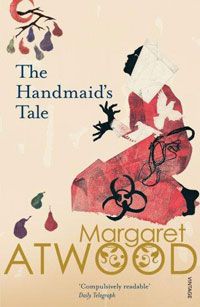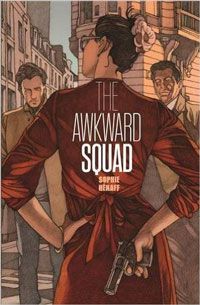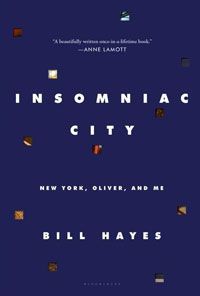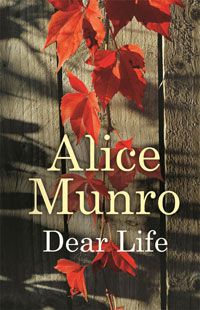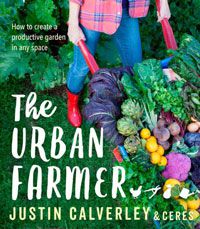Each week we bring you a sample of the books we’re reading, the films and TV shows we’re watching, and the music we’re listening to.
Bronte Coates is reading The Handmaid’s Tale by Margaret Atwood
After deciding to read something ‘topical’ for our next meeting, my book club picked The Handmaid’s Tale. With a buzzing new series currently streaming, and seemingly endless think pieces on this book’s relevance to today’s politics, it seemed am obvious choice. I fell in love with Atwood in my late teens and have actually read her 1985 classic a few times before. Consequently, I’m very familiar with the story but reading it again I too was struck by how pertinent the book is right now. On a line level Atwood is precise and powerful. The Handmaid’s Tale is a tense, unsettling read that chills me. I discover new things to love about this book each time I pick it up. And even though I’ve heard terrific things about the series (coming to SBS Australia in July), this is definitely one of those book you need to read first.
Mike Shuttleworth is reading The Awkward Squad by Sophie Hénaff
I have to tip the chapeau to Readings crime fiction specialist Fiona Hardy for this one. Sophie Hénaff’s novel, The Awkward Squad, is set in Paris and follows a mismatched bunch of fired/semi-retired/hard-to-get-hired French detectives after they’re handed a cache of cold cases as kind of high end work-for-the-dole project. The story reminds me of Fred Vargas’s Three Evangelists series with its combination of oddball sleuths and the cocktail of drama and human comedy. Not one for the hardboiled, forensic reader, but as an entertainment with emotion, character and, yes, Paris, this will do nicely.
Fiona Hardy is reading Insomniac City by Bill Hayes
I read Bill Hayes’s memoir in the small space around my normal life – in the car when I arrived at the kinder pickup six minutes early, in the brief time while my partner brushed his teeth in the bathroom that’s too crowded for both of us. Since I am not particularly tender with books, I removed the dustjacket with its tiny, neat squares and the book still manages to feels like art in my hands. Without the dustjacket, the cover displays a photograph of Manhattan at night, sharp and shining, and the pages are all deckled-edge, which always looks lovely and terribly important (even if it makes the act of turning the pages more difficult). I want to treat the book gently, because it is gentle. It’s gentle in the way it explores New York, with Hayes transforming every small person and moment into something big. And brighter than even the Empire State Building which Hayes sees from his apartment window each day is Oliver Sacks. He struggles with his physical failings even as he he embraces his new emotional landscape that is love. Sacks hid his sexuality for almost his entire life, and reading about how one of the smartest men in literature learns afresh how not to be lonely is stunningly beautiful.
I’m not finished the memoir yet, though of course I know how it ends. I was talking to a customer who read the book while in hospital, and was visiting Readings to find something of Oliver’s to read next. I told her how I hadn’t banked on not wanting to finish it, on wanting to spread it thin over my week. It’s not a long book, but, as my lovely customer pointed out, it’s small, but it has so much in it. So who knows when I will finish it, this depiction of a rose-tinted Manhattan, this story of a man looking at himself and at his lover through the soft fog of memories. I’m using the shining, carefully flattened wrapper of an Easter egg as my bookmark, maybe it will never make it to the last page.
Amy Vuleta is reading Dear Life by Alice Munro
The St Kilda Contemporary Book Clubs are reading Dear Life by Alice Munro this month, and I have the pleasure of hosting a number of groups’ discussions around this collection of stories. We’ve not read and discussed a short story collection in this book club before, and so far, it’s proving to be an incredibly rewarding and fascinating process. We’ve been able to mine the depths of a few stories in quite a bit of detail due to their short and self-contained structure, as well as pull back to get a broader view of the collection as a whole, tracking the recurring themes and ideas being explored. Alice Munro has been on my ‘to read’ list for years now, since she was awarded the Nobel prize for literature in 2013. Munro’s stories are remarkable in so many ways: the genre would best be described as contemporary realism, and on a basic level they represent everyday lives of everyday people. She also communicates a strong sense of the cultural and social values of an era, from the 1930s through to the contemporary, and often from a perspective that is distinctly interested in feminism and the options available to women and how that has changed. On realising the skill and nuance of how Munro constructs her stories, especially in relation to the way they each move through time, I’ve sought out some further discussion and criticism on her work, such as an episode of the New Yorker Fiction podcast in which Lauren Groff (author of Fates and Furies – a brilliant novel!) reads a story by Munro and discusses the way that story deals with time. It’s a fascinating listen, and has enhanced by reading and re-reading of Alice Munro’s stories.
Ellen Cregan is reading The Urban Farmer by Justin Calverley and CERES
Ever since I became my primary school’s environmental monitor in grade five, CERES has been one of my favourite places in Melbourne. It’s such an amazing space with a brilliant ethos and backstory – an urban oasis really. I’m always blown away by how lush the gardens around the park are (and how content its resident chickens seem). This book is full of great tips for creating a sustainable and productive garden regardless of the space you have to work with. While I’m lucky enough to have an in-ground veggie patch at home, this book would still be really useful for growing food out of pots or planter boxes. One of my favourite aspects so far is that the book has lots of advice on organic pest-management, most of which is preventative. It’s also got lots of handy charts about seasonal planting, and a whole chapter on native bushfoods. I’ve already noticed the pages of my copy are becoming very grubby, which I think is a good sign.


